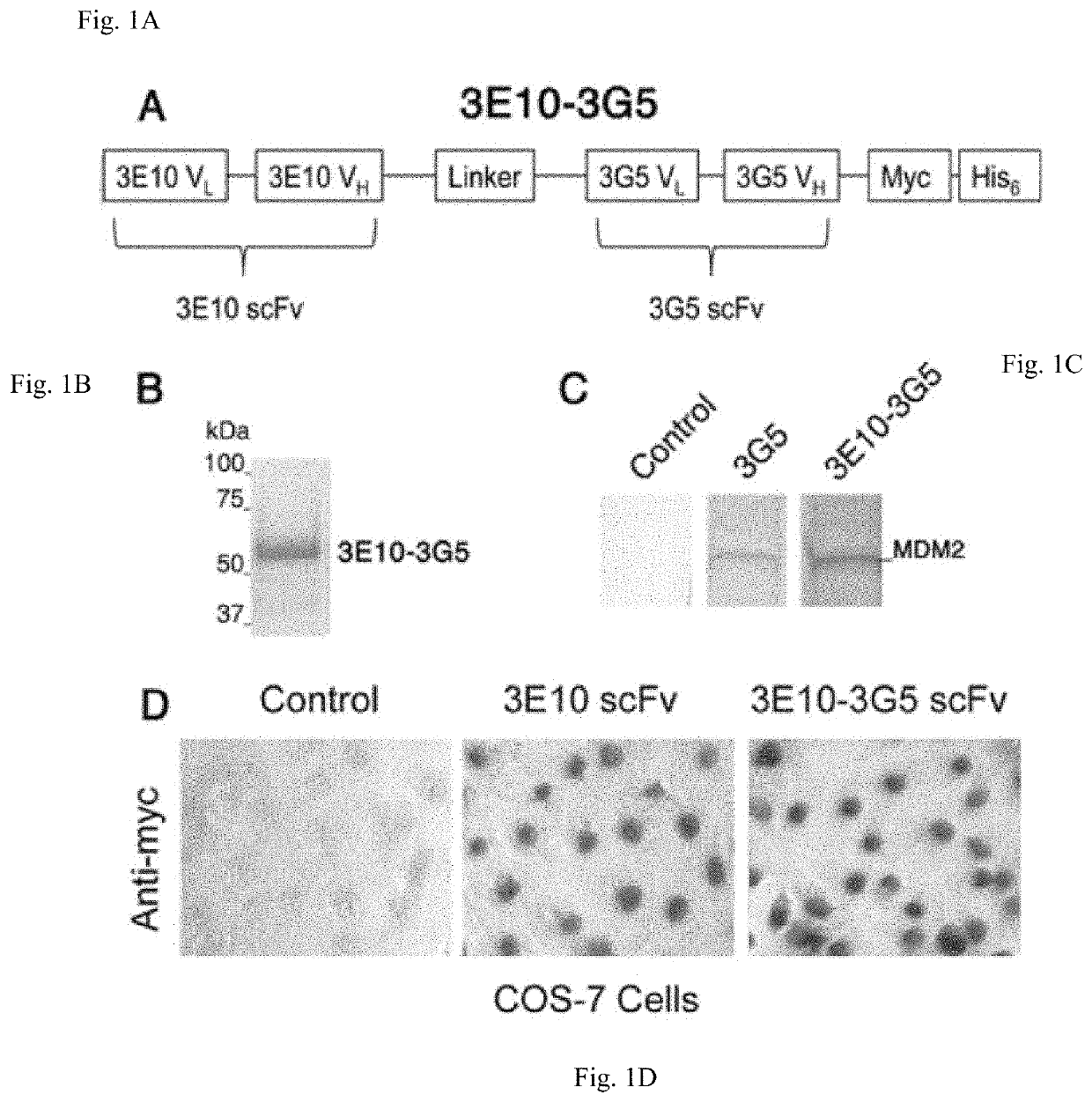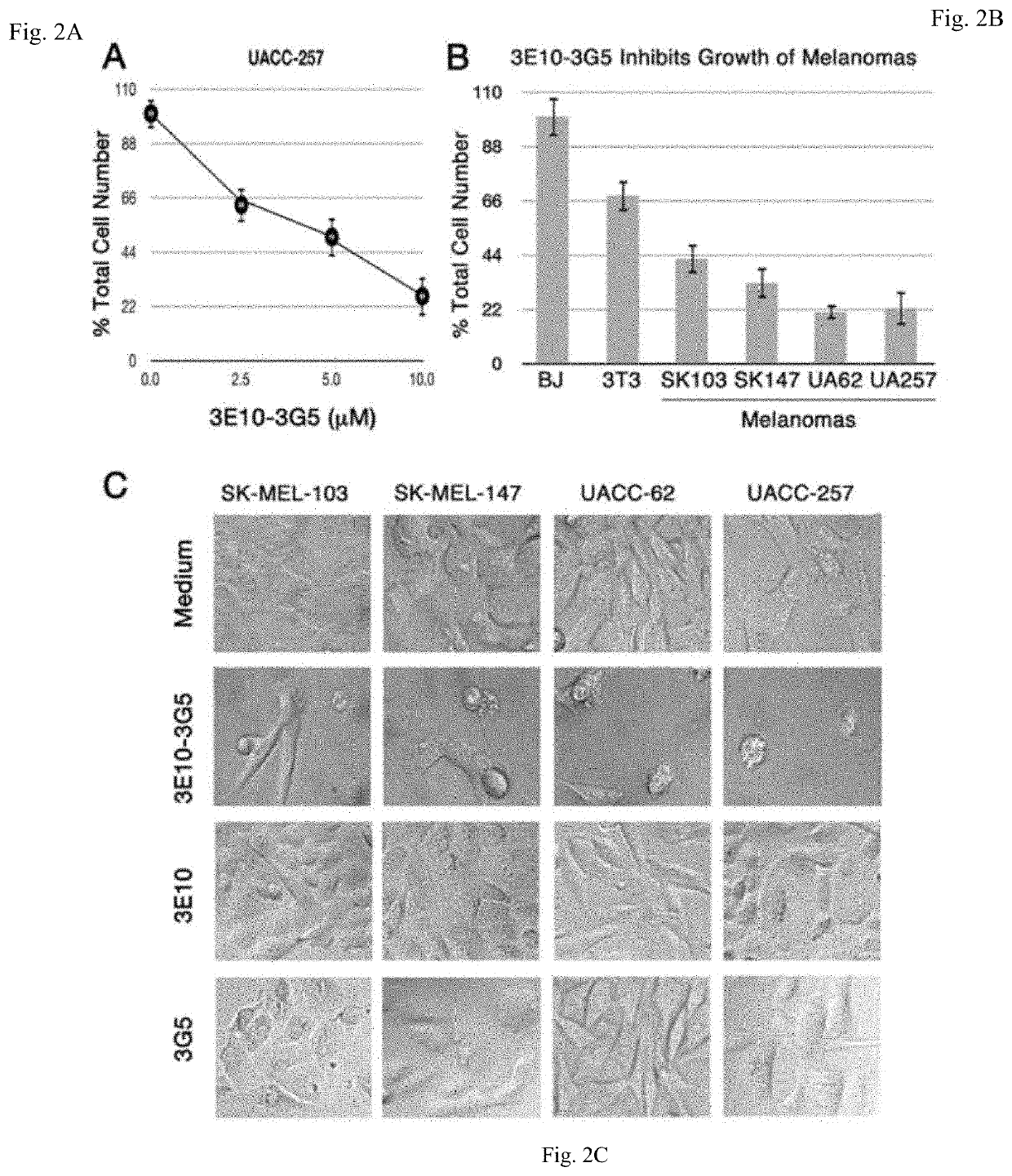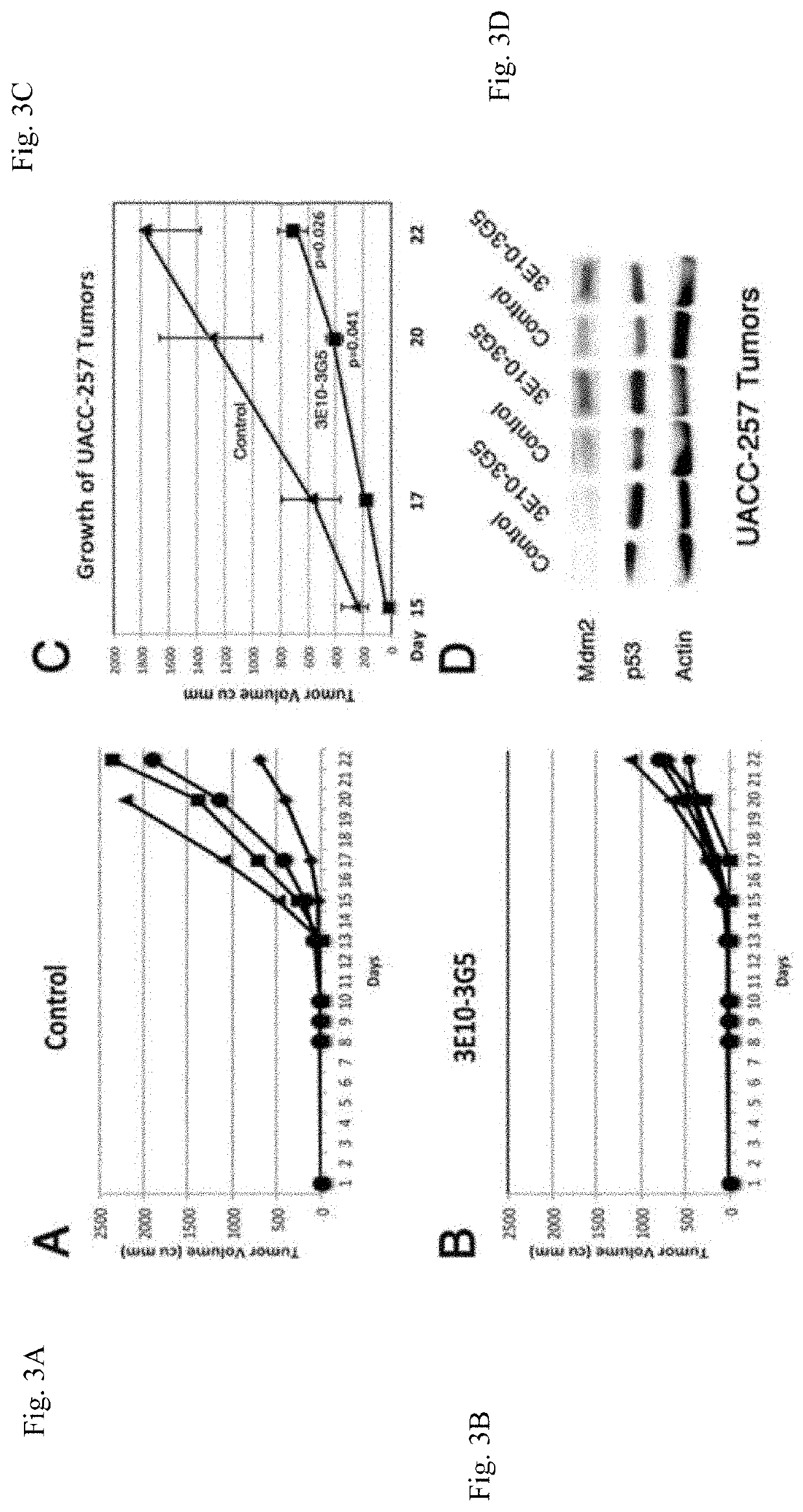Targeting Intracellular Target-Binding Determinants with Intracellular Antibodies
- Summary
- Abstract
- Description
- Claims
- Application Information
AI Technical Summary
Benefits of technology
Problems solved by technology
Method used
Image
Examples
example 1
[0160]Materials and Methods
[0161]Cell Lines
[0162]Cell lines obtained from the American Type Culture Collection (ATCC) include: COS-7 monkey kidney cells; MC-7 human ovarian cancer cells that over-express MDM2; 3T3 transformed mouse fibroblasts; BJ primary human fibroblasts. Human melanoma cells sensitive to MDM2 inhibition were obtained from Maria S. Soengas, Madrid, Spain, and included SK-MEL-103, SK-MEL-147, UACC-62, and UACC-257. These cell lines were not authenticated by our laboratory after receiving them.
[0163]Design, Expression, and Purification of the 3E10-3G5 Bispecific Antibody
[0164]3G5 hybridoma was obtained from Arnold J. Levine, Princeton University. 3G5 Vk and VH were cloned by RT-PCR from hybridoma RNA with degenerate primers designed to identify mouse immunoglobulin variable region genes, and 3G5 scFv was constructed as described previously (4). Variable region heavy and light chains were attached with a (GGGGS)3 linker. The Fv fragments were connected with a linker ...
example 2
[0186]3E10-PAb421 Inhibits Growth of HT29 Cells in vitro and in vivo
[0187]3E10-PAb421 bispecific single-chain antibody was assayed in vitro for cytotoxicity against the colon cancer cell line, HT29 and glioblastoma cell line, U251 both containing p53 mutation R273H. Also tested was the astrocytoma cell line, LN319 containing p53 mutation R175H. All of the cell lines showed dose-response inhibition of growth in response to 3E10-PAb421 (FIG. 6). Moreover, 3E10-PAb421 and 3E10-3G5 were synergistic in inhibiting the growth of cancer cells (FIG. 7). Cytotoxicity in vitro is shown in a photomicrograph (FIG. 8). Nude mice were used to study the effect of 3E10-PAb421 on the growth of HT29 cancer cells in vivo. Mice were injected with 2×106 HT29 cells in the hind flank. When tumors reached 400 mm3, 1.5 mg of 3E10-PAb421 was injected intraperitoneally daily. 3E10-PAb421 inhibited growth of tumors 2 to 3 days following initiation of therapy (FIG. 9).
PUM
| Property | Measurement | Unit |
|---|---|---|
| Biological properties | aaaaa | aaaaa |
Abstract
Description
Claims
Application Information
 Login to View More
Login to View More - R&D
- Intellectual Property
- Life Sciences
- Materials
- Tech Scout
- Unparalleled Data Quality
- Higher Quality Content
- 60% Fewer Hallucinations
Browse by: Latest US Patents, China's latest patents, Technical Efficacy Thesaurus, Application Domain, Technology Topic, Popular Technical Reports.
© 2025 PatSnap. All rights reserved.Legal|Privacy policy|Modern Slavery Act Transparency Statement|Sitemap|About US| Contact US: help@patsnap.com



